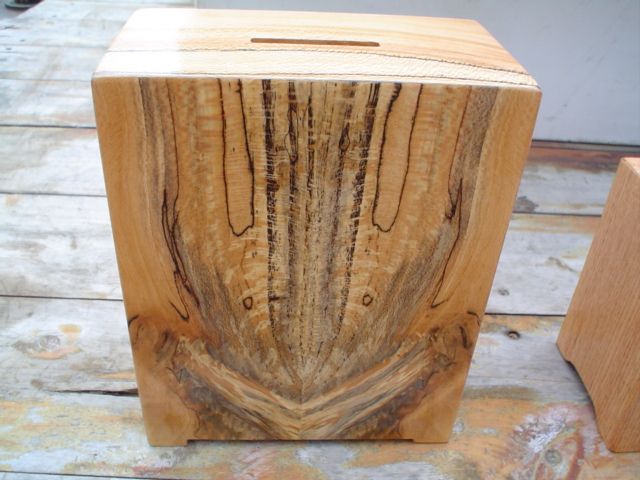Question
On my Norwood bandwheel, with the blade turning slowly, I can see it moving front to back on the guide rollers approximately 1/8". With the blade turning fast, it seems to be fluttering up and down 1/8" as well. This is noticed before entering a log, and guide roller position doesn't seem to make a noticeable difference. I don't get major rising or diving while cutting, but it is enough to be problematic. Tracking has been checked and rechecked and is in proper order. Is it possible for a blade that is left with cutting tension to shrink in length due to cold temperatures with enough force to bend the spindles the bandwheels spin on?
Forum Responses
(Sawing and Drying Forum)
From contributor S:
The saw needs to be flat, and it sounds like that blade is bent. A blade will bend when pushed too hard, and it can even stay bent afterwards. Drop your tension and check it again. If it still is moving in and out with very low tension, then the saw is bent.
You think the wheel axle has a bend in it. I would think 1/8 wheel wobble would be easy to see. The wheels need to run true, but also need to be round.
The saw flutter is commonly a tension problem (too low). I believe one or two of the saw manufacturers (such as Timber Wolf) suggest a technique for tensioning the saw by watching the flutter.
It sounds to me that you are cutting with dull saws. There are lots of signs of this that you can watch for: sawdust size, stringing edges, increase in sound, number of board feet, and how the saw exits the cut. Limit your saw cut time to 2 hours of sawing. Pushing a saw will result in the bend in blade issue, diving and climbing in the cut.
Switch saw after the bark has been removed, but make sure those are good cuts or those errors will show up in every board.
Never leave a saw on the mill. The best use for a saw is to put it on, run it and pull it. Don't even leave it tensioned on the mill over lunch.
Is this the only blade, or is it the same after changing? Possible bad weld alignment if only one and new.
It's easy to check axle and bandwheel - remove blade and spin bandwheels to see if they flutter or run true (hold something solid near wheel while it's spinning).
I agree with contributor S - could be blade stressed. I'm still new at sawing and want to run blades too long ("it's still cutting, let's go another log").
The trick is finding a good saw to work on your mill. I found that I liked the 1 1/2 saws best. They are stronger and I believe make a better cut. But you will find everybody has their own view on mills and saws.
